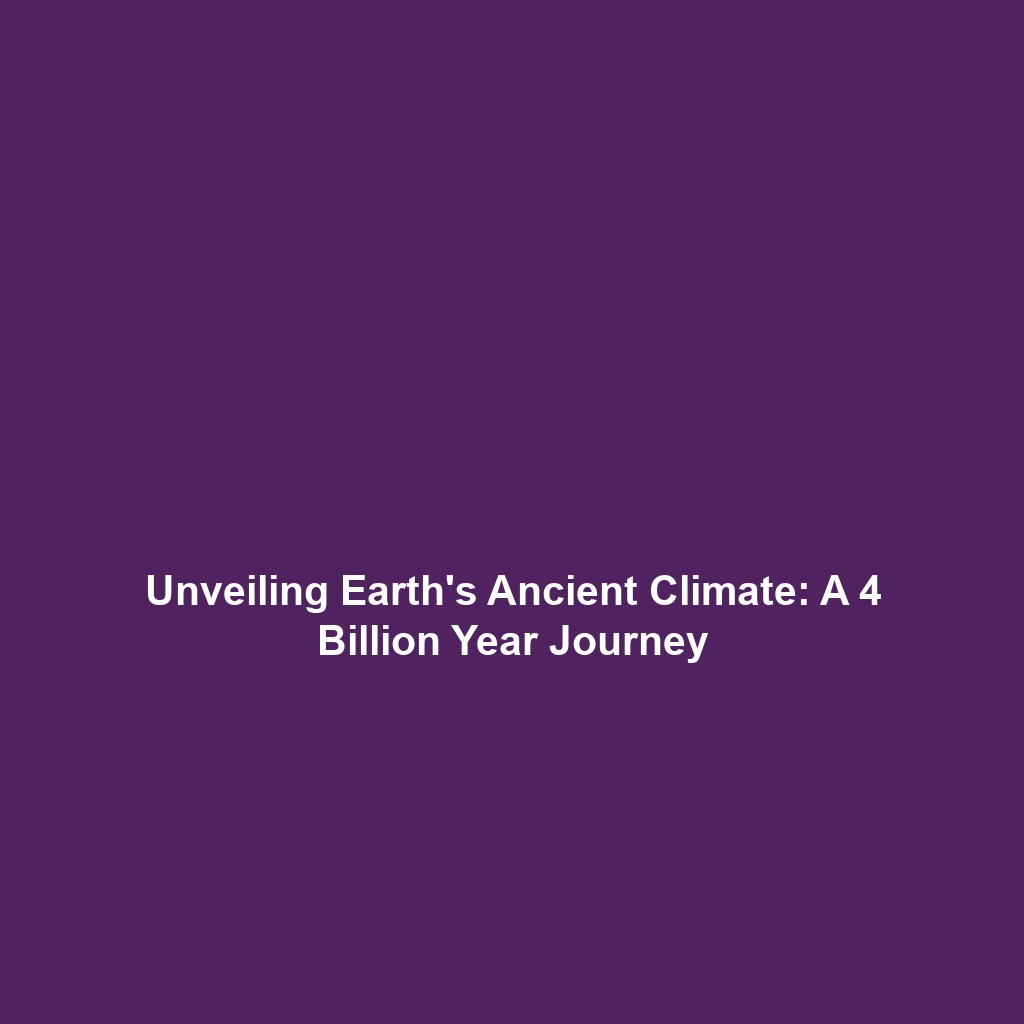Droughts and Extreme Weather Events Recorded in Tree Ring Widths
Introduction: The study of climate history encompasses a wide range of phenomena, one of which includes the critical role of tree rings in recording droughts and extreme weather events. Tree ring widths serve as natural climate archives, reflecting the ecological responses of trees to environmental stressors such as prolonged drought or unusual weather patterns. This method of dendrochronology not only provides insight into historic climate conditions but also helps scientists understand the implications of current climate change, underscoring its relevance in the ongoing conversation about sustainability and adaptation strategies.
Key Concepts
Understanding how tree rings serve as indicators of past climate conditions involves several key concepts:
- Dendrochronology: This is the science of dating tree rings to analyze environmental conditions over time. Wider rings typically indicate favorable growth conditions, while narrower rings signify stress from drought or extreme weather.
- Climatic Signals: Tree rings can reflect both temperature and moisture levels, providing a direct link between tree growth and climatic conditions.
- Climate Variability: The study of inter-annual and multi-decadal climate changes is crucial for interpreting how historical extreme weather events influenced ecosystems.
- Long-term Data: Dendrochronology offers centuries-long records that are invaluable for understanding historical climate patterns and trends.
Applications and Real-World Uses
The applications of studying tree ring widths are extensive, particularly when assessing climate history:
- Climate Reconstruction: Scientists use tree rings to reconstruct past climate conditions, enabling them to model future climate scenarios more accurately.
- Drought Assessment: Tree ring data can inform water resource management by providing historical perspectives on drought frequency and intensity.
- Forest Management: Understanding the response of tree species to past climates helps in making informed decisions for sustainable forestry practices.
- Archaeological Studies: Tree rings can assist in dating historical events and settlements, enriching our understanding of human interaction with climate.
Current Challenges
Despite advancements, several challenges persist in studying tree rings and their relationship with droughts and extreme weather events:
- Species Variability: Different tree species react differently to stress, complicating the interpretation of data.
- Data Standardization: Variance in measurement techniques can lead to inconsistencies in research findings.
- Limitations of Local Data: Localized studies may not capture broader climatic trends, limiting the applicability of findings.
- Future Uncertainties: Predicting how trees will respond to unprecedented climate conditions poses a significant challenge.
Future Research and Innovations
Future research in tree ring studies is poised to innovate on several fronts:
- Advanced Imaging Techniques: Breakthroughs in imaging technology may allow for more precise measurements of tree ring characteristics.
- Integrative Modeling: Combining tree ring data with other climate proxies could lead to more comprehensive climate models.
- Genomic Studies: Investigating the genetic factors influencing tree growth could reveal further insights into climate resilience.
- Citizen Science Initiatives: Engaging the public in data collection can vastly expand research capabilities and enrich the database of historical climate data.
Conclusion
In conclusion, the examination of droughts and extreme weather events through tree ring widths proves to be a vital component of climate history. As we delve deeper into understanding our planet’s climatic past, this natural archive offers invaluable insights that could guide future environmental strategies. Continued research in this area not only enriches our knowledge but also supports the urgent need for effective climate action. For further reading on related topics, explore our sections on climate patterns and dendrochronology tools.
